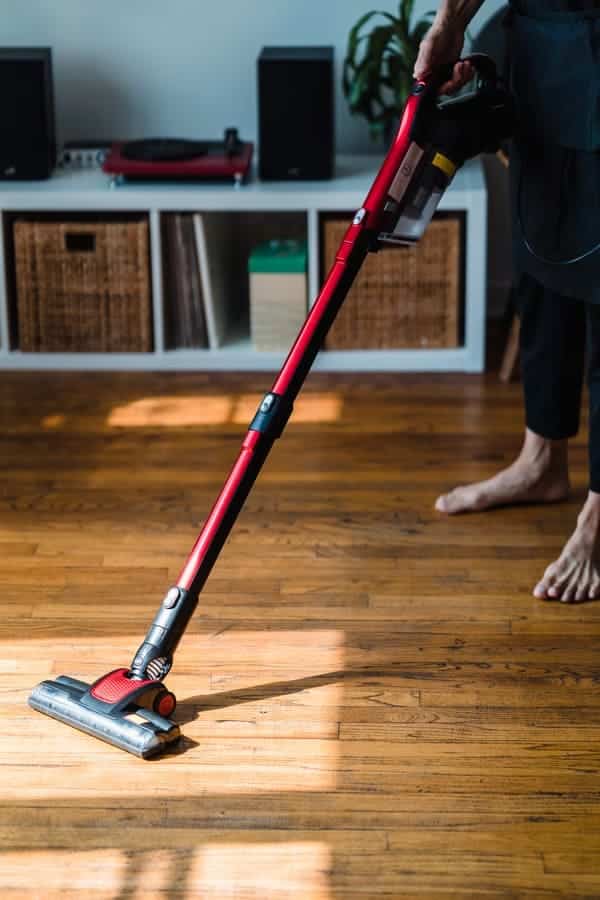New blankets tend to shed, and so do older blankets. Woven cotton and fleece blankets are the worst offenders, but you might even find synthetic blankets can shed.
It is recommended to wash your blankets at least 4 times a year, but new blankets might need to be washed more frequently.
Shedding can happen to any blanket, whether they’re new, old, made of poor-quality materials or handled too much by sellers. To prevent shedding, washing and drying your blanket will help, but you have to ensure that you use the appropriate water temperature and add one key ingredient.
- Why do blankets shed?
- Washing a shedding blanket
- Unwashable blankets
- How to stop a fleece blanket from shedding
- Additional tips
- Things to look for when buying a new blanket
- What is the best way to keep a polyester blanket from shedding?
- Which blanket is best for not shedding?
- Can you wash knitted or crocheted blankets in the washing machine?
There may be affiliate links in this article. You can read more about this in my disclosure.
Why do blankets shed?

There is one major drawback of blankets, and that is that they shed. Almost every single type of blanket, including faux fur, fleece, wool, and acrylic is the most susceptible to shedding.
This usually happens because some fibres of the blanket are not properly cut and sewn. There is a chain reaction due to this which causes the blanket to shed after only a few uses.
It also occurs when the blanket is washed and maintained incorrectly.
Washing a shedding blanket
The best materials for blankets are usually the ones that shred and shed the most. Thankfully, there are some easy ways in which you can help to stop these materials from shedding and keep them soft and warm.
Remove as much of the loose lint/fibres that you can from the blanket. This can be done by either shaking the blanket, beating it or using a tennis racket.
You can also use a lint roller over both sides. Ensure that when you wash the blanket, wash it on its own.
This will help to prevent the blanket from rubbing against any other items which will cause it to shed further. Ensure that there is more than enough water in the washer.
If you have a HE washer, you can pour extra water through the detergent dispenser.
Use cold water rather than warm or hot. This will help to prevent the blanket from shredding.
Use a gentle cycle which is especially important in top load washers. The agitation bar can act as an abrasive on the blanket.
Consider using fabric softener or 1 cup of white vinegar for the rinse cycle. This will assist in holding the fabric fibres in place.
It is best to allow your blanket to air dry if possible by hanging it over a shower curtain rod or a clothesline outside. If you do need to use a tumble drier then use the low or no heat setting.
Consider spraying some laundry starch on the blanket to further prevent it from shedding while on your bed. Do not use too much starch in order to prevent the blanket from going stiff or starchy.
Just a little is enough to help.
Unwashable blankets
1. Shake it out
If you have a blanket that is unable to be put in the washing machine due to causing further damage or an increase in shedding, then it’s best to take the blanket outdoors and shake it well to get rid of any loose material.
You can dry-clean a wool or fur blanket annually. You can also use a brush lint to assist with removing any debris.
2. Vacuum it

You can use a vacuum cleaner to remove any loose fibres or nattily hairs from any blanket. Use a clean, soft or smooth vacuum attachment.
If you have a good vacuum with a nice suction, then it might be better to use a lower-powered handheld model instead. Lightweight worsted wool and other natural or man-made
3. Dry cleaning
A good dry cleaner can help your blankets from shedding. Many people will send new blankets to the dry cleaners as soon as they purchase them in order to prevent shedding.
How to stop a fleece blanket from shedding
The quality of a fleece blanket will largely influence whether the final product will shed or not. However, the larger factor is the manufacturing process.
Additional tips

Don’t use both a dryer sheet and fabric softener. The excess residue can cause the blanket to shed more.
If you notice little balls developing on your blanket, this is known as pilling. Use a fabric shaver to remove them.
If you don’t have one of these, then you can use a disposable razor instead. Run it over the surface lightly, applying minimal pressure.
Hand-washing your blanket will also decrease the amount of lint that is created. Wash the blanket in the sink or bathtub using a mild detergent.
Things to look for when buying a new blanket
If you’ve come to realise that your blanket is too much for you to handle, then there are things to look out for when you purchase a new one.
You don’t need to worry too much about the washing and drying process if you have purchased a good-quality blanket.
There are two easy methods when it comes to checking for a fleece blanket that is unlikely to shed as much. One is easy, simply rub your palm in a circular motion on the surface of the fabric for about a few seconds.
Ensure that you apply medium to heavy pressure. If you notice circular balls of fabric then you can be sure that the blanket will shed with minimal use.
The other technique is the pinch-and-pull method. Use your thumb and forefinger and gently pull at some of the fibres.
If it’s easily plucked, then it is a sign of poor brushing and shearing. This should give you the impression that shedding will immediately occur.
There are some manufacturers that want to reduce the production cost, and this means that there is usually a sacrifice in the quality of the product.
What is the best way to keep a polyester blanket from shedding?
It’s best to wash your polyester blanket at the recommended temperature and ensure that you read the care instructions that it came with.
Use vinegar, chlorine-free detergent and cold or lukewarm water.
Which blanket is best for not shedding?
Flannel blankets are the best for not shedding as they are wrinkle and fade-resistant. It’s made entirely out of microfibre polyester which makes it fade and shade resistant and is suitable for all seasons.
Can you wash knitted or crocheted blankets in the washing machine?
You should wash knitted or crocheted blankets in accordance with the type of fibre or composite material. Acrylic and acrylic mixes can be washed in the machine, whereas any other should be washed by hand.
Blanket shedding can be an annoying problem to have, but you have many options in which you can try to prevent it from getting too bad.
Many people solve blanket shedding issues by washing the blankets.
As long as you’re following the care instructions, it should be easy to manage and keep control of.
Decide which method you think is best for you based on the type of blanket that you own. Some of these tips will work better than others depending on what type of blanket you’re working with.
Last update on 2024-04-25 / Affiliate links / Images from Amazon Product Advertising API












